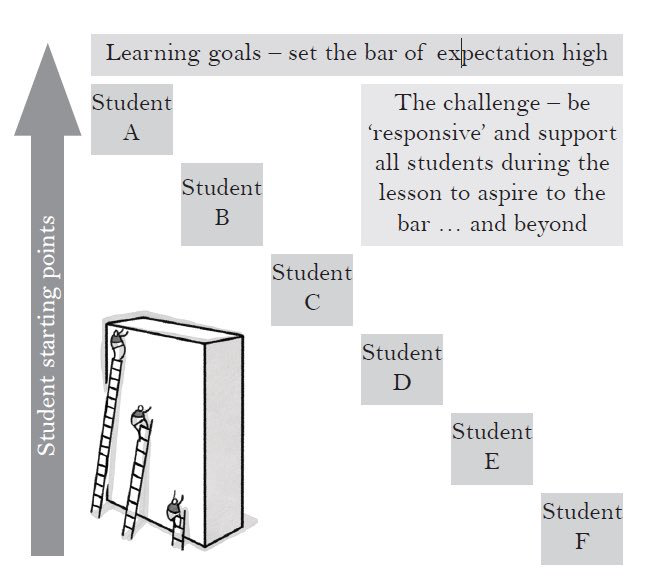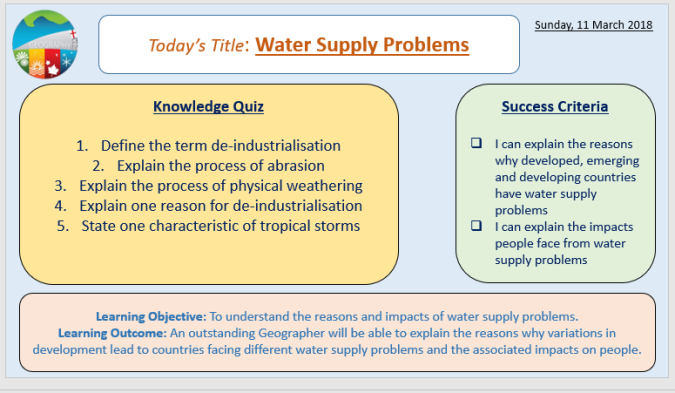Over the past few months I have seen many teachers tweeting about the concept of differentiation and the expectations placed on them to demonstrate they are differentiating for their students. One comment has stuck with me: “A HAP book should look different to that of a MAP or LAP book”. This whole idea concerns me when we have moved to non-tiered, undifferentiated GCSEs for the large proportion of the curriculum, since September 2016.
Geoff Petty defines differentiation as follows: ‘the process by which differences between learners are accommodated so that all students in a group have the best possible chance of learning’.
So, it is a process by which teachers ‘accommodate’ different types of learners to ensure they can ALL access the learning. Having read the excellent Make Every Lesson Count by Shaun Allison and Andy Tharby, I agree that differentiation isn’t about the historical notion of providing students with different worksheets, but about providing suitable challenge, and being responsive to support them in achieving the learning goals. In the past, many low ability students have fallen in to the ‘comfort zone’ where there has been low challenge and a self-fulfilling prophecy of underachievement. I believe if teachers set high challenge and allow students to enter the ‘struggle zone’, then with appropriate support, we see students thrive.
If we take one element of a GCSE specification relating to river landscapes:
How river landscapes contrast between the upper courses, mid courses and lower courses of rivers and why channel shape (width, depth), valley profile, gradient, discharge, velocity and sediment size and shape change along the course of a named UK river.
This key idea from the specification is ‘undifferentiated’; it is essential that ALL students studying geography at GCSE can understand the reasons why river landscapes contrast between their upper, middle and lower courses. It is therefore the role of the teacher to set up the learning for ALL students to reach this outcome but provide scaffolding and be responsive for those students that might require more support to do so. The illustration from Make Every Lesson Count demonstrates this:

This is how we have approached differentiation in our department. Firstly, we don’t have graded success criteria (using the terms ALL, MOST, SOME; bronze, silver, gold; or any other 3-tiered system of outcomes). Instead we have just one outstanding outcome, using the phrase, ‘an outstanding geographer will be able to…’ to set the bar high and challenge all students right from the outset. This means that our expectations of the students are high, and we inspire all to work towards the highest learning goal.

To provide appropriate support for students when they are working on the knowledge quiz, we have a structured sheet. Overtime, this scaffolded support is reduced to 4 supported questions, then 3, until the student no longer needs the additional support. This has meant the lower ability students don’t hit the ‘panic zone’ at the start of the lesson.

We then have several strategies that we use, as and when appropriate, depending on the subject content and the students, which includes:
- Structure strips
- Modelling
- Questioning
- Highlighting
- Question stems
- Writing frames
The effective use of these strategies relies on the expertise of the teacher, which has been a departmental focus to ensure all teachers know what excellence looks like in geography.
Pingback: Differentiation by Support and Rosenshine’s Principles of Instruction. | failthinklearn